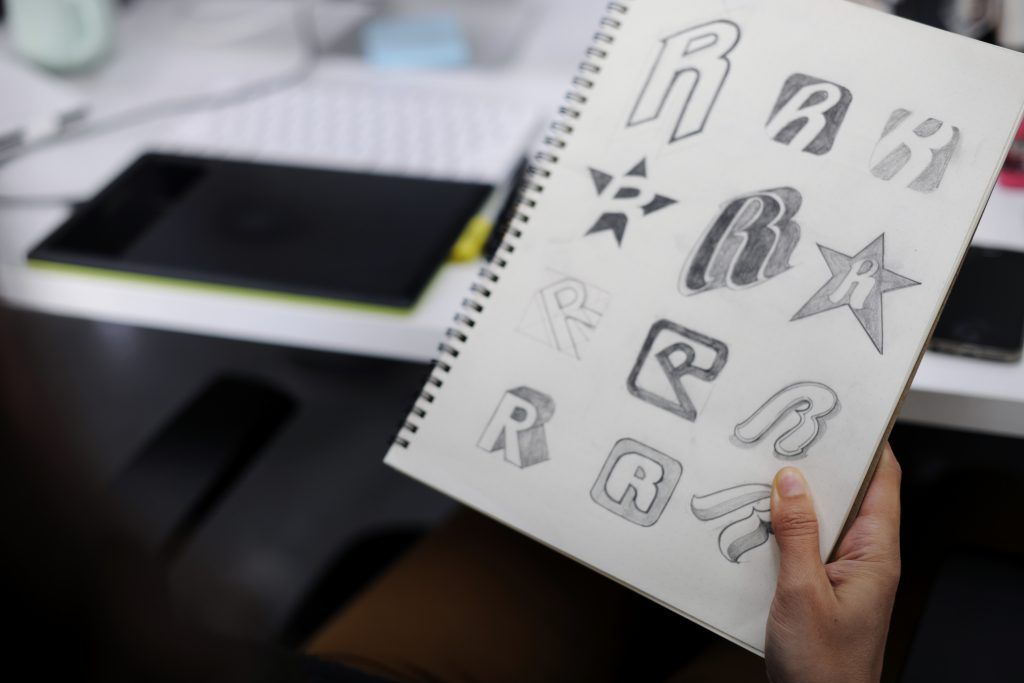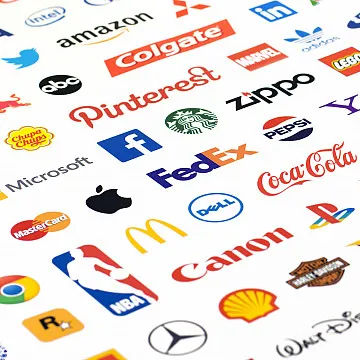There are few companies that can be easily recognised by their corporate identity design. Apple, Coca-Cola, Disney, McDonald’s, Windows, and Nike are all masters of creating something that is easily recognisable as their own. When you see their logo, you know exactly who it represents, both in terms of company and identity.
Logo is just one of a few critical components of your corporate identity design. You want people to associate your logo with a brand identity and personality that inspires loyalty and a sense of positivity.
When done right, your brand identity design will be associated with your core values too. This is what helps to build a larger following and strong customer loyalty. From branded clothing to promotional products, there are many ways to display your product design in a way that further connects people to your product.
Let’s take a look at what corporate identity is and how your corporate identity design can create the kind of customer base that is the bedrock of a successful business.
Understanding Corporate Identity
Corporate identity is the way that you and your company present yourself to the general public. This includes things like your mission statement and company motto. While those are meant to help reflect your values, you have to actually act upon them as well.
The following are some of the key components of establishing your corporate identity:
- A simple, eye-catching logo
- Quality of the product or service – the value of what you have to offer
- Appearance of products
- Appearance and quality of corporate branding
- Presentation of the company in the media, including online and in public
- Company culture
Essentially, your corporate identity is how people, particularly your customers, perceive you. Brand identity plays a role in that, but the identity goes far beyond just visual perceptions.
Perhaps the best way to think about it is to consider pictures you took of yourself when you were in your teens or early twenties. You thought you gave off a certain look and vibe. A decade later (or more), you look back at that same picture and perceive it differently. When you took the picture, you had a certain image and intent in your mind, but that doesn’t mean that was how you actually came off to the people around you.
Building a corporate identity focuses on creating the right perception of the company and ensuring that you and your employees continue to act in ways that align with your desired perception.

What a Great Corporate Identity Can Do for Your Business
There are countless examples of companies being successful or falling apart based on their corporate image and identity. A bad social media post can cause significant damage to a company. When a complaint about a company goes viral on TikTok, companies jump to try to rectify the way it is perceived.
Some companies are adept at combining their culture with the current Zeitgeist, with Google being a prime example. They had a motto that demonstrated the direction they wanted to go with their company. And they had a company culture that appeared to encourage work/life balance, while simultaneously helping inspire people to excel in their jobs.
What you want is a design that reflects the identity that you are working to establish with your company.
Virtually all companies that become internationally known have several things in common when it comes to their identity design. That’s because a good corporate identity design has a lot of benefits.
- It is easily recognisable with a company, which boosts public awareness. Having a simple, visually distinct logo and brand can quickly leave an impression on potential customers. Having a positive experience with your brand will help to cement that positive impression that will be stimulated when people see your brand.
- It facilitates a relationship between you and your customers. With nearly 2/3rds of people conducting research before making purchases, you want branding that is easily recognisable when they are ready to make a purchase. Consider how knockoff brands mimic well-known brands – that’s because they are trying to leverage the relationship that people have with the name brand.
- A good brand and logo can help you stand out from the competition. There are some industries where this is easy because there are few to no competitors. For everyone else, you want branding that people can recognise as distinct to your company.
- A good brand identity design easily reinforces your brand and its personality. This can be a good thing or a bad one. Consider how you feel when you see the old Twitter bird – you definitely feel something, whether good or bad. It started as a simple design for the brief social media texts, but how people interacted and were monitored by the company quickly came to be associated with that simple logo too.
It’s easy to see the benefits when you think of your favourite brands. Just seeing the logo can simulate positive emotions around that brand. You are more likely to follow news about them and to try new products and services because you trust them.
This is what you want to establish with your design – a positive emotional reaction by just seeing the logo, name, or image easily associated with your company.

The Four Considerations for Your Corporate Identity Design
You want the logo and branding to reflect the persona that you establish for your company. From the colour choices to the design, you want the look to match how you want people to think of your company.
You need to consider these four visual elements.
Your Logo
This is what most people think of when they think of a corporate design. For nearly all major companies, you have a close association between them and their logos. Typically, the simpler the design, the more effective it is.
Your Colours
Studies have shown that colours have a definite effect on people. Before they know your company, people already have their own impressions of different colours. One of the earliest things we are asked in school is what our favourite colours are.
Beyond that, colours have a psychological effect on us. Take the time to research those effects, and then you can settle on colours that can work toward the impression you want to leave on people the first time they see your logo, branding, or designs.
The most popular colours are usually the primary colours or other more basic colours. That’s because they have the same appearance regardless of where they are seen. If you choose a neon colour for your website, that colour isn’t going to look the same on a shirt or banner – neon simply doesn’t translate well to a lot of other media.
Your Wording
Often referred to as typography, wording is important for your company. Getting the wording right requires several important considerations.
- You need an easy-to-read font. You also want your font to look professional. The only real caveat to that is if you are in an industry that provides products or services for infants and children, then you may want a font that is more visually representative of the age group.
- The spacing needs to be clear.
- The thickness of the letters needs to be easy to read and not distracting.
- The length of the wording. There is a reason why people tend to abbreviate, such as universities. They will have a professional, longer version of the university name on branded clothing, water bottles, and other merchandise, but the logo is often abbreviated. You need to consider all the ways that you want to present your company.
Your Design’s Shape and Form
Simple, clean shapes are often used because they provide the most benefits. Consider the simple M logo of McDonald’s. It’s a shape that appears more than just with the logo, and so people are more likely to think of the fast food place because they are reminded of it, even without looking at the logo.
Simple, clean shapes are also easy to reproduce. They don’t require a lot of special design or work to duplicate and add to a wide range of media, especially merchandise. They even look good in corporate uniforms.
It is important to make sure that your shapes and forms are reviewed from several different angles. You don’t want to use something that could be considered offensive. For example, when Uber redesigned its logo a while back, people thought it looked more like a part of human anatomy—that should have been easy to avoid by having a part of the review process to verify that the shapes and forms weren’t potentially offensive.

Making the Most of Your Design Assets
When you consider your company from a visual perspective, it can really help you think of what will leave the right impression. You know how you want people to think of your company—now, you need to consider the best way to show that through design assets.
- You want a logo that is easily associated with your company – not anyone else.
- You need to consider the many different ways that you will market your company, including all of the different types of media where you will be presenting your company, whether online, on merchandise, in the media, or at conventions.
- Your business cards are one of the first things that can help establish your company around town. As you network, having a clean, crisp business card can leave the right impression.
- Think about how you want to present your company over email, including all of the visual aspects. This can include newsletters as these are usually tied to email campaigns.
- If you plan to have traditional marketing, such as brochures and billboards, consider how you want those to look.
- If you have existing customers, you can send them promotional products and corporate gifts when you rebrand. This not only helps them see the new branding but also reminds them to consider you if they need your goods and services.
As you build your visual identity, you need to consider all of the different ways that you will present it. Your logo is only the first in a long line of visual representations of your company. Yes, it should be easily recognised, but most of the time, you are going to include a lot more than just the logo when interacting with customers and potential customers.
Keep all of the assets in mind as you build your brand and develop your visual identity.
Final Thoughts
When developing a brand and its identity, there are so many considerations, making it a particularly daunting task. No one knows better how you want to represent your company, but you do need outside input to establish the right look and feel for your company’s image.
This process can take a long time, but in the end, it is worth it to create something that is easily associated with your company.
